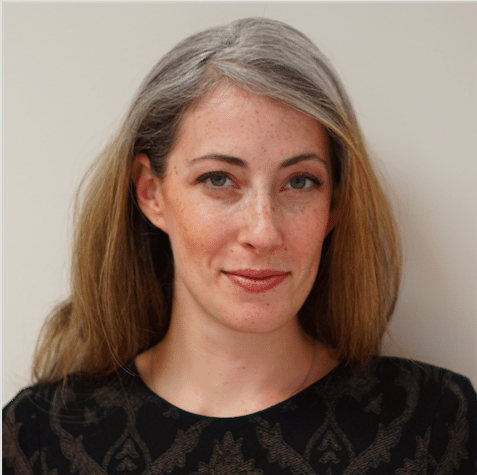As higher education institutions face new demands from society, students, and the government, the ground is shifting beneath them. Concurrently, the accrediting organizations that oversee colleges and universities are encountering similar changes in their landscape.
Institutions are innovating to meet 21st-century challenges; our most recent paper, “College transformed,” profiles five institutions that are doing so. But some institutional leaders are unsure about how accreditors will receive these innovative models.
To get color on how accreditors view innovation, I chatted with Barbara Brittingham, president of the Commission on Institutions of Higher Education at the New England Association of Schools and Colleges (NEASC). NEASC accredits three of the five institutions highlighted in “College transformed,” including Simmons College, Northeastern University, and Southern New Hampshire University.
Alana: First, how does the Commission approach innovation?
Barbara: New England is blessed with many innovative institutions. The three that are highlighted in the paper are really good, but there are many others as well. There is a culture of innovation in the region. It’s sometimes easier for an independent institution to be innovative rather than a public school; New England has a disproportionate number of private, independent organizations.
From the Commission’s perspective, new standards went into effect July 1st. one of the things that changed was the preamble. Perhaps people don’t read the preamble, but they should! We explicitly state that we “welcome perceptive and imaginative innovation aimed at increasing the effectiveness of higher education.” Innovation is on the Commission’s mind.
One of the things that we hear over and over again from people who serve on the Commission is an appreciation for the great diversity of institutions in New England. That diversity happens because of innovation, and creates a mindset that something new and different can be a really good thing. We live in challenging times, especially for education, and there is an understanding that just doing the same thing as it’s been done in the past won’t address the challenges or take advantage of opportunities.
Alana: How do you balance innovation (trying new things) with quality (making sure that innovations meet high standards)?
Barbara: The Commission does a substantial review and revision of its standards every ten years, and at the midpoint of its cycle it does a minor review. The standards set out what’s expected and required of an institution of higher education. Some of what’s in the standards is required by federal law. But the standards are designed to set out what’s required in an institution that the public can trust. Ultimately, it’s a peer review process for the members. Every year in the annual conference, we are trying to focus on some things that are innovative and putting the differences [among the members] in front of the membership, showing that there are different ways of doing things that can be successful.
In New England we are blessed by the small geography of the region; it means that schools who are thinking of doing something different can come talk to the staff about it, and the staff can give advice and perspective on how the Commission will think about what they are proposing. From time to time, something will come up that the Commission will take more time to look at. Southern New Hampshire University (SNHU)’s Direct Assessment program in College for America is a good example of that—it’s a really different program. Generally, when the Commission meets, meetings are over a Thursday and Friday, and we sometimes arrange a Wednesday afternoon discussion session for something of particular interest. When SNHU came to us with the proposal for College for America, the Commission used that discussion session to talk about it.
Alana: It seems like there’s a bias toward innovation rather than against it.
Barbara: I would say so. But we also look for the capacity to undertake the innovation. So speaking with the SNHU example, they had considerable grant money and had hired people who came with really strong backgrounds. It wasn’t just an idea that two or three people had that was interesting, they also had the people and the capacity to really do it well.
Alana: What about autonomous units, which we advise institutions to do if they are seeking to implement disruptive innovations? Is that something that higher education can do, or does it violate accreditation standards?
Barbara: I think it depends on the institution as to whether it’s needed. For instance, at Olin College of Engineering, it’s small, new, very focused and built with the idea that it will keep innovating. If they decided to do something deeply innovative, my thought is that they wouldn’t set up an autonomous unit, because they are open to innovation already. For older institutions with more established processes and culture, it may be more necessary.
When it comes to the standards, if a college came along and decided to set up something totally separate–separate academic officer, totally separate systems–where the only person in common was the president, that would be too separate. We need to see some continuity. The Commission has to be persuaded that it’s one institution, not two—but there’s not a formula to that.
Alana: What are some examples of innovation that can’t fly with the Commission?
Barbara: Recently, a school proposed an innovation wherein the students who enrolled in the innovative program wouldn’t be able to apply credits to the regular program. In effect, they weren’t recognizing their own credits—and the Commission said they couldn’t do that. It looked like they didn’t take their own program seriously. The institution ultimately came back with a new proposal that included accepting their own credits, and the Commission approved it and the school launched the program—but it didn’t work.
Alana: What advice do you have for institutional leaders who are looking to bring innovative programs to the Commission for approval?
Barbara: Read the Standards—identify whether there is anything in there that seems to be an obvious challenge. Pick up the phone and talk to one of us or come in and meet with us. At NEASC, as staff, we have essentially two jobs. One is to make sure institutions understand the Standards; and the other is to make sure the Commission has the information it needs in order to make a decision. We want to help people make sure that they are following the Standards when they design new programs and that they are providing the Commission with the information it needs in order to approve new ideas.



